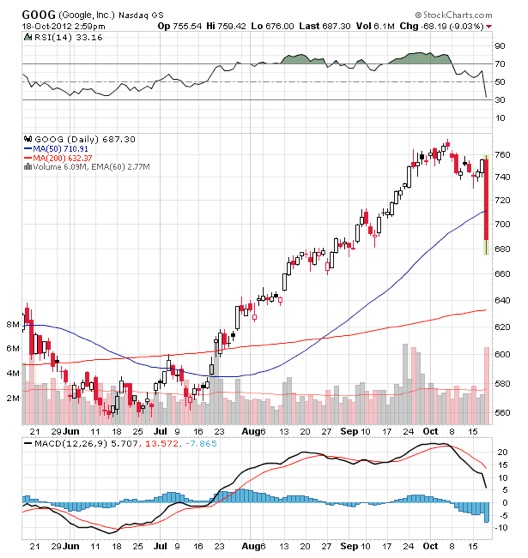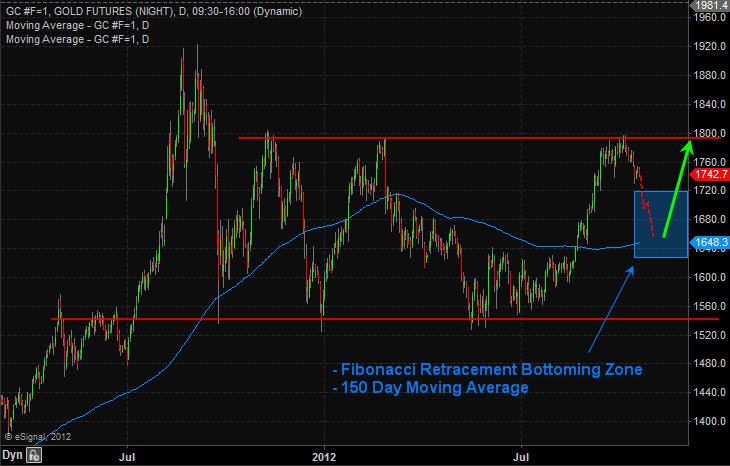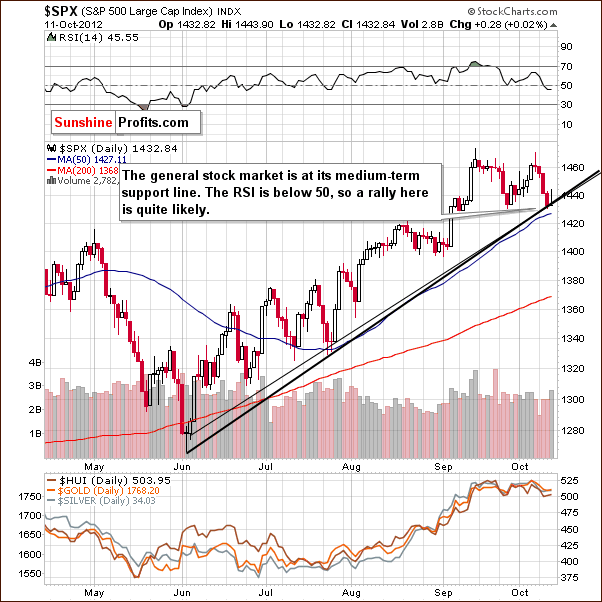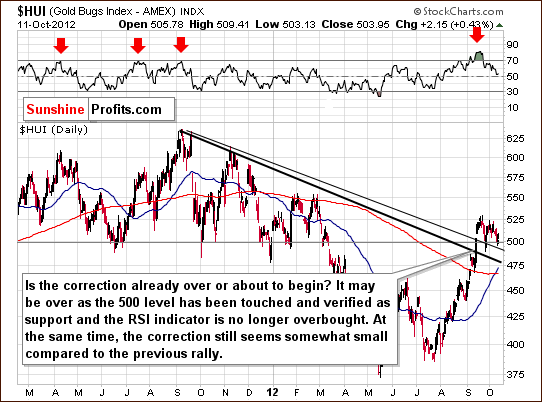The major financial markets are dominated by large funds that behave like lemmings—follow the herd and suffer the consequences. Investors should not fall for the commonly held myth that all professionals have an edge over smaller institutional and individual investors. In this exclusive Gold Report interview, Roger Wiegand, editor ofTrader Tracks Newsletter, discusses the criteria he uses to select the best mining and exploration companies. He then explains how moderate trading within a mostly buy-and-hold portfolio can lead to superior returns without the downsides that lemming behavior can cause.
The Gold Report: We are going to talk about “lemming investing,” the theme of your most recent newsletter. Who or what are lemmings and how does their behavior drive the market?
Roger Wiegand: The lemmings that drive the market primarily are the big funds, typically mutual funds that manage 401(k) and individual retirement accounts. Most of those funds are set up on a buy-and-hold basis. There are hedge funds with lemming behavior as well, but the hedge funds are more often traders. They are creating a track record of lemming investing as well because of their huge size—billions and billions of dollars. The other sector of the market is the retail investor, with approximately 30% of the market.
The lemming investor market would be most all of the funds and all of the smaller investor’s money. The large funds primarily invest money for the smaller investors (being the lemmings). They really control what’s going on, and they compose 70% of the market. And they do, in fact, establish the trend. Non-lemming investors are those with large accounts who trade for their own pockets and the pockets of the seven figure and larger trader/investors. This is the sector leading/driving the market with mutual fund managers investing lemming money.
TGR: In your recent newsletters, you discuss commonly held investment myths. Near the top of the list was that the largest “professionals” always have special insight unavailable to smaller professionals and individuals. Is that what you’re stating here?
RW: That’s correct. The reason we wrote the article about the lemmings is that we think the old paradigm of buy and hold forever is not a good way to go. That’s not to say that you can’t buy stocks and hold them for an extended period. What we like people to do on our recommendations in ourTrader Tracks Newsletter is to purchase stocks on a buy-and-hold basis and then trade in and out up to twice a year based upon the two annual cycle changes. One of those, of course, would be to sell in May and go away. The other would be the re-entry after the summer, but then you have to deal with the September-October period when the stock markets tend to have a risk of large corrections. We called the correction this fall, and we hit it right on the day. We said it would be on Sept. 24. It was a mild correction. In other words, the buying stopped, and prices fell a bit.
The presidential election is interfering with market direction right now. People are confused as to what may or may not happen. We have the overriding negative problems of a slowdown in Asia, a major slowdown in Europe and a mild slowdown in the U.S. The U.S. broader stock market has generally been holding up pretty well. We think that it will be propped up and levitated at least until the voting is over on Nov. 6. After that, reality may hit home in many markets depending upon who is elected president. I don’t think it realistically matters in the short term in any way, except for the psychology of the market. While there will clearly be an impact, it is not clear what that impact will be. Wall Street favors a Romney election but historically the markets have done better after a Democrat has been elected. This time is indeed different on numerous factors.
Resolution of the European debt situation is also adding to the overall market indecisiveness. Spain and some of the other neighboring countries have serious problems and we don’t fully know how bad is bad. Since we talked on this interview, new meetings and media outflow from Europe tell us they are frightened and afraid to remark on the true status. However, the International Monetary Fund stated a very dire warning on Oct. 8, 2012, using the word “alarming.”
TGR: So the lemming behavior you’re witnessing now is that the larger funds deploying capital are ignoring or glossing over the major macroeconomic problems worldwide?
RW: The big players understand fundamental problems, but they also have so much power that they can move the market, for example, by buying the S&P 500 for market support. Other strategies they use to keep markets artificially high include not selling off entire positions or very selective selling of the weakest issues. The funds can also protect long positions by buying put options. They have been doing this for years and have a lot of computing power to back up their analysis. For example, if they felt the market was going to sell off 10% in October, they would want to buy options to the extent they could cover themselves on just that 10%. That sounds like a lot of money, but it’s not really because the puts are leveraged. This is like buying an insurance policy to protect the overall investments.
TGR: You advocate a “modified” buy-and-hold strategy to your subscribers. That is, a traditional buy-and-hold strategy with seasonal trading. Does that mean you are biased toward the long side with minimal short exposure?
RW: That’s correct. We like to trade. We trade both stock and futures, and we prefer the long side. Occasionally, we will short. Our short trades haven’t been bad, but they haven’t produced the kinds of returns we have gotten on the long side. Our strategy is focused on the long side. When we see downside pressure coming, we recommend put options, profit taking and scaling back positions to reduce exposure and lock in profits. Once the correction is done, we go back in and buy.
TGR: This month’s newsletter had a multi-decade chart of the Wilshire 5000, which you called bearish. Are you negative on equities in general?
RW: The Wilshire is getting near a peak, and that chart is a very long (yearly) chart. I prefer to use monthlies for the big picture. The monthly is telling us we have a bear market in front of us. The question is how much of a bear market is it? I’m not totally against stocks, but our preference is in precious metals and energy stocks, as well as some currencies. I believe we are in a rotation away from junior stocks and moving toward intermediates. That doesn’t mean there aren’t good juniors out there. We have many good juniors in our newsletter and on our list, and we do prefer them. But we also suggest that people trade them and be very selective.
TGR: What is your strategy with juniors?
RW: We look for the junior explorers with these criteria:
1) Superior management.
2) Well financed. (Juniors in the fall of 2012 need to be well financed because if a junior company has to go back into the market and raise more capital, it could be vulnerable.) If it’s sitting with enough cash to work with a burn rate that will help it manage the business for two or three years, I think it is going to be in good shape. We have several stocks in that category in the newsletter.
3) Good geopolitics and geography. We’ve gotten very selective about geopolitics and geography. There is much of the world where we prefer not to go anymore. We currently favor most of Canada, part of Alaska, northeast Nevada, and we like Mexico. It is a relatively short list.
4) Proximity to a major operator. This is really important. If you’re going to hang on to a junior stock and a company follows the rules, we really prefer that it’s sitting next door or in close proximity to a senior miner that’s in operation. Mine building is tough work. It is best to follow a successful company that has worked out the infrastructure and politics. We all know what’s happened to the cost of building mines and infrastructure over the last 6 to 12 months. One of my suggested companies had an initial estimate of $95 million (M) to build its mine. It went back and reconfigured it—then all of a sudden $95M became $440M. That’s a drastic increase due to inflation, availability of money and many other factors. If you have the first three criteria worked out, this point becomes critical – you need an obvious buyer for that property. We have had several examples of this situation that have worked out quite nicely.
TGR: Having a built-in exit strategy for a junior is a great way to cap off a winning investment. How about entry strategies? Are you more interested in silver or gold at present?
RW: We like both. From a futures trading standpoint, gold may be easier. However, given the high gold to silver ratio, there is probably more upside in the silver market. For stocks, there are a lot of companies to choose from. Because we spend a lot of time analyzing these companies, we are comfortable recommending silver juniors for greater leverage. But we have some gold companies that are doing exceedingly well, too.
TGR: Are there specific companies that you think highlight all these points: management, financing, geopolitics and exit strategy in the precious metals sector?
RW: I have several that I know well. The first is a fairly new one for us—Global Minerals Ltd. (CTG:TSX.V; DPF:FSE). It has a property in Eastern Europe, which is out of our preferred geography, but I would call this a “special situation” on that criterion. Global is located in Slovakia, which is not only Westernized, it is also mining friendly. Global Minerals has an old mine that has millions of ounces of silver. The mine was inoperative, but is being re-opened and dewatered. It has expanded underground exploration and is increasing resources. The development is progressing nicely. We got on it at approximately $0.30/share. The last I saw, it’s about $0.44/share. It has so much metal in that mine, and all the conditions are set up for a great operation—mining friendly community, good country, a lot of good things going on.
TGR: Are there any companies closer to your mostly North American geography criterion that you think are interesting?
RW: One of our favorites is Pretium Resources Inc. (PVG:TSX; PVG:NYSE). We know the management. We know the property. Robert Quartermain is the president and CEO of the company. He completed very successful development projects with Silver Standard Resources Inc. (SSO:TSX; SSRI:NASDAQ). He bought these Pretium properties from Silver Standard and is building up Pretium. Next door is Seabridge Gold Inc. (SEA:TSX; SA:NYSE.MKT) with 42 million ounces (Moz) gold Proven. There is no senior miner in that district. I believe that a senior will come in and buy Seabridge and Pretium all in a package. I think that it’s looking like probably a minimum size of 50 Moz gold, if not more. Pretium is well financed and has extremely strong management with great experience. It went in there with a plan this last summer, with 50 geologists and engineers, three helicopters, and it was planning 70,000 meters of drilling. The company continues to find glory holes in that property. When Pretium bought it from Silver Standard, many glory holes were proven already and on the books by top geologists. Of course, Bob Quartermain is a geologist as well. We think that one could be at least a double or triple.
TGR: Regarding geopolitical risk, overall, Canada is a low risk jurisdiction, but portions of British Columbia might be riskier than some people are comfortable with. Is the political climate of B.C. better than most investors think?
RW: I think that the question about having problems with political situations was more of a concern in past years, maybe even as recent as a year or two ago. But a lot of that is starting to fade away. I think much has to do with the fact that communities are looking for jobs. The mining industry is labor intensive. Consequently, if they can start up a mine and be successful, it’s a real plum for the local community economically. Political pressure that drives job creation and tax revenue to the province is an advantage for the Pretium property.
TGR: Pretium already has a large market cap; do you still think there’s an upside?
RW: Pretium has many advocates. A top New York analyst several months ago, when the stock was around $8–9/share, did a fine report and was looking for a price on the shares of around $33/share. We’re looking at a price of about $38/share. We’re not that far from where he is.
TGR: What other junior companies are you keeping your eye on?
RW: Another of our favorites was a junior, and it is now more of an intermediate. That is MAG Silver Corp. (MAG:TSX; MVG:NYSE) in Mexico. MAG Silver also has joint ventures with another company on this list, Canasil Resources Inc. (CLZ:TSX.V). MAG Silver’s idea is to build a very large property position. It is looking to build a 100 Moz silver property, which would rival Peñoles (BMV:PE&OLES), which is one of the top miners in Mexico and the world. MAG Silver has a lot of cash. Management is composed of very smart people and is very experienced. Mexico, especially northern Mexico, is one of the top places to be for silver. We like the company. We like the whole situation. That one is a recent recommendation in our letter. We came in last July at about $8.77/share. The stock is up at around $12/share and still going up. If the silver prices continue to rise, it will continue to do better.
TGR: Do most of its projects wrap up into one district play, because the company website lists many projects? How do you interpret it?
RW: It has many scattered projects, but the main area of interest is really one senior-type play. It is advancing several projects on its own and with partners. We just think it’s a fabulous opportunity. Peter Megaw is the top geologist there. He’s a colleague and a friend, a person whom I admire greatly. He has a fantastic reputation in the business and knows Mexico like the back of his hand. The company has been very responsive in explaining every facet of the project to investors and we think it’s great.
TGR: Any other interesting companies that you want to mention?
RW: One is Timmins Gold Corp. (TMM:TSX.V; TGD:NYSE.MKT). It’s in northern Mexico. Bruce Bragagnolo is the CEO of that company. He has done work as an attorney with many mining companies in Vancouver for many years. Obviously, that experience showed him a lot of the pluses and minuses of the industry, and he started this company not that long ago. It is an operator, but I would call it a junior based upon price, which is running around $3/share. We recommended it back in February at $1.22/share. That particular company and that stock have been excellent for our readers, traders and investors. We’ve had some of them in and out of Timmins four or five times. Some people just buy it and sit on it. If you’re going to do a buy and hold, that would be one of the few that I would put in that category simply because it is a producer now. It employs about 650 people. The mine continues to expand. It has done everything right from the standpoint of starting and running a business. Timmins’ management is superior. We would look for that stock to do much better. It’s what I would call a good, growing stock.
TGR: Would a producer be more conducive to your modified buy-and-hold, limited trading strategy because a producer might track the underlying bullion price closer without some of the drill result-type spikes that you would see with others?
RW: That’s a good point. That’s one of the reasons why we like Timmins. Normally, with a company like Timmins, the shares might be $10, $15 or $20, but it is a young company, and it is growing quickly. But, as a producer, not just an explorer, Timmins has everything in position to continue to produce and to grow, yet is priced today somewhat like a junior company would be. It’s common for us to see these junior stocks in the $1–3 range and we see a lot of growth on the upside. Its advantages include superior management, solid financing, low-risk geography and being a producer. By being a producer it doesn’t have to go out and raise money, even though it is priced like an explorer.
TGR: All the midtier and senior miners need to start somewhere. Do you have any other examples?
RW: We are excited about Gold Standard Ventures Corp. (GSV:TSX.V; GDVXF:OTCQX) in Nevada. It has a property next door to the big senior miner, Newmont Mining Corp. (NEM:NYSE), in the Carlin Trend. That is Newmont’s Rain mine and it is doing well. Some years ago, its chief geologist told management that it was trying to buy this property. In fact, Newmont was trying to get it for 15 years, but somebody else won the prize. The group that owns it now has done a fabulous job in exploration and startup. Not only that, it hired the senior geologist from Newmont to be the consulting geologist on this project. I view the Gold Standard Ventures property as an extension of what Newmont is already mining. That’s just the way it’s viewed.
TGR: What is the name of that district?
RW: It’s called the Railroad area.
TGR: And it just added the Pinion property to the south of that, correct?
RW: Yes. As you know, that whole region, generally for the big operators, has been an incredible producer. I can’t remember the number on the amount of gold and metals they’ve pulled out of that region, but it’s just fabulous. It’s the southern end of the Carlin Trend.
Another point on Gold Standard Ventures, which encouraged me early on, is the fact that there’s a very wealthy Canadian investor who bought in early, who owns 20% of the stock. He has a history of success in investing in these companies. By owning 20% of the stock, that stock probably isn’t going to move until there is a merger, a sale or a something. Consequently, that’s a big floor underneath the price of the shares. We think that one is a top opportunity. We like it a lot.
TGR: Even though it ran quite a bit over the last year, you still think there’s upside?
RW: Yes. In our opinion as non-geologists, the property could offer a lot more in values.
TGR: In a situation like this, how would you build a position given that you are periodically trading your buy-and-hold strategy? Do you wait for pullbacks or jump in right away?
RW: We wait for a pullback. Normally, when we recommend a junior company, we are looking to find in our technical work—we are technicians—an opportunity that appears to offer a position for the shares to appreciate 25% in three months. That’s our minimum goal when we initiate a position. Sometimes the price runs faster—sometimes we get 100% or more. Then you have another decision, and that is, are you going to sell part or all? But the core of the strategy is the 25% target. Over the longer view, if you had a company like Timmins, if you wanted to hold it, and that’s one of the ones that I would prefer to hold, I would be looking to make at least 100%, but you’re probably going to have a longer timeline. You’re going to have to look at maybe a year to two years. However, based upon Timmins’ performance over time, they can run fast with the gold price too.
TGR: You’ve given the readers some really good ideas. Do you want to summarize what you think investors should keep in mind when they’re trying not to be lemmings?
RW: One important consideration investors need to keep in mind is the volume of trading in juniors. If you’re going to sell, you’re going to have to sell into strength. If you wait for a peak in gold or silver, you may not have many buyers for a junior mining stock. With certain juniors, you want to buy and hold, knowing full well you could get a 50% haircut, but then it will turn around and go right back up again. The other thing is if you buy the stock and you make a triple and you see a correction coming, it may be a good time to go in and take all the money off the table. There are also individual tax questions, and variations depending on the specific company and position, but you get the idea.
I’m very wary of the broader stock market for this fall for at least a -20% correction. After the election, we could encounter some very serious problems in credit and in stocks worldwide. It’s no secret that some of the very wealthy people, the billionaires, are selling millions of shares of general market stock right now. Some of them have been interviewed to the extent they’re afraid of another 1929 event. Nobody can really call that for sure, but as a technician, I see the charts are looking like a markets sell-off after the election. Regardless, if an investor follows a well thought out strategy of stock analysis with occasional trading, that investor will outperform the large number of lemmings over time.
TGR: Thanks so much for your time.
Roger Wiegand—aka Trader Rog—produces Trader Tracks Newsletter to provide investors with short-term buy and sell recommendations and give them insights into political and economic factors that drive markets. After 25 years in real estate, Wiegand has devoted intensive research time to the precious metals, currency, energy and financial market for more than 18 years. He is a regular contributor to theKorelin Economics Report.
Want to read more exclusive Gold Report interviews like this? Sign up for our free e-newsletter, and you’ll learn when new articles have been published. To see a list of recent interviews with industry analysts and commentators, visit our Exclusive Interviews page.

DISCLOSURE:
1) Alec Gimurtu of The Gold Report conducted this interview. He personally and/or his family own shares of the following companies mentioned in this interview: Silver Standard Resources Inc.
2) The following companies mentioned in the interview are sponsors of The Gold Report: Global Minerals Inc., Pretium Resources Inc., MAG Silver Corp., Timmins Gold Corp. and Gold Standard Ventures Corp. Streetwise Reports does not accept stock in exchange for services. Interviews are edited for clarity.
3) Roger Wiegand: I personally and/or my family own shares of the following companies mentioned in this interview: None. I personally and/or my family am paid by the following companies mentioned in this interview: None. I was not paid by Streetwise Reports for participating in this interview. Roger Wiegand trades only futures and commodities for his personal retirement account. He prefers not to recommend shares and then be an owner of them for ethical reasons.




















